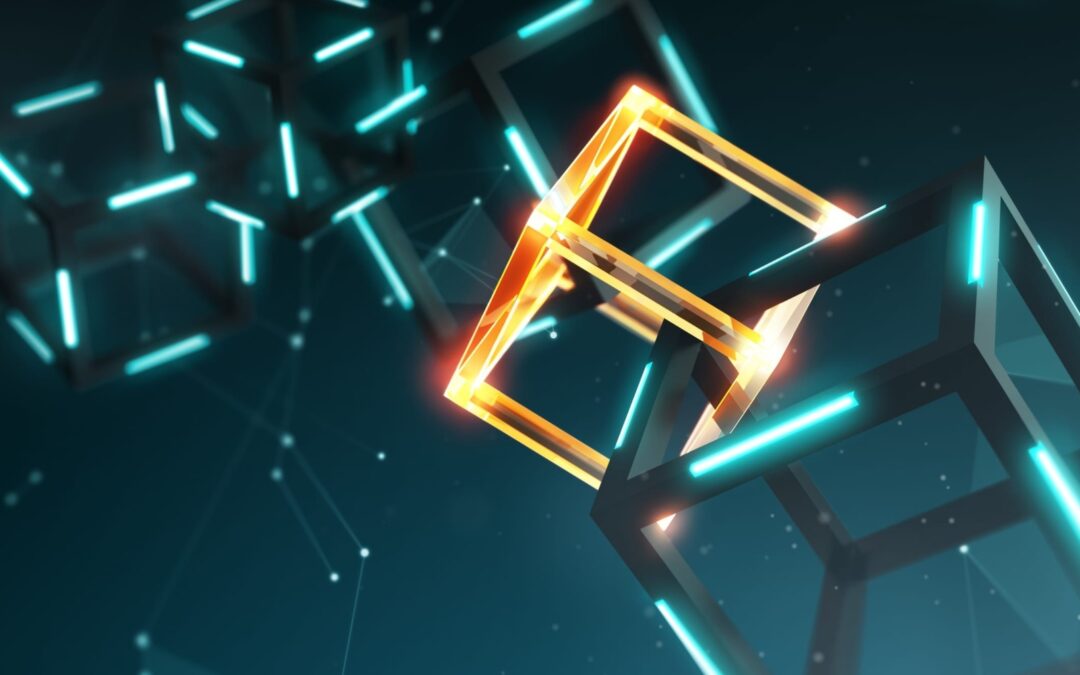Combiner IA et blockchain pour augmenter la valeur de vos flux EDI
L’EDI est une technologie qui existe depuis les années 90 et qui évolue constamment. En 2020, 85% des flux de la supply chain étaient traités en EDI dans le monde. Dans cet article, nous expliquerons pourquoi l’EDI reste d’actualité dans la supply chain. Puis nous verrons comment les technologies émergentes se positionnent pour apporter une réponse à la demande croissante de synchronisation et de partage des données entre différents acteurs.
L’EDI, une technologie vieillissante ?
Qu’est-ce que l’EDI ?
L’EDI permet d’échanger des données informatisées entre deux sociétés, plus précisément entre deux systèmes d’information. Il est possible d’échanger tout type d’informations et d’intégrer automatiquement ces flux aux systèmes d’information.
L’EDI est couramment utilisé pour échanger des flux concernant des:
- Commandes
- Livraisons
- Facturations
Mais des standards EDI existent également pour dématérialiser bien d’autres types de documents, comme des fiches tarifaires, des référentiels produits, des ordres de transport…
L’EDI : quand les formats et les normes évoluent
L’EDI existe depuis les années 90, et a émergé dans l’industrie automobile, le secteur bancaire ou la grande distribution.
De nombreux secteurs d’activité ou professions se sont depuis organisés. Le but étant de définir des normes, puis d’établir des protocoles spécifiques à leur activité, au type de flux, au besoin d’échanger des données en temps réel, à la zone géographique concernée… Ces communautés professionnelles ont largement contribué à l’adoption massive de l’EDI par les entreprises, tous secteurs confondus.
L’essor d’Internet et l’intensification de la digitalisation des échanges ont permis de fiabiliser les flux et de réduire le coût de transport des messages. L’EDI est une technologie qui s’enrichie en continue, au gré de l’émergence de nouvelles technologies.
L’EDI évolue en se combinant à d’autres technologies
La blockchain, le cloud et les réseaux d’API sont des technologies récentes qui sont complémentaires à l’EDI. Elles permettent de répondre à de nouvelles problématiques clients qui ne sont aujourd’hui pas parfaitement traitées par des standards classiques EDI, comme la connectivité.
L’EDI ne va pas disparaître, mais vivre une transformation. Le fait de passer par le cloud représente non seulement un gain de temps et d’argent pour les échanges entre deux partenaires, mais également un moyen :
- D’accéder à d’autres partenaires de manière tout aussi rapide
- D’automatiser un certain nombre d’opérations
- De traiter un volume d’information beaucoup plus important
- De traiter les flux d’information plus rapidement
Combinées à l’EDI, ces nouvelles technologies permettent à la supply chain de gagner en agilité et connectivité, malgré la complexité et l’hétérogénéité des flux de données.
Pourquoi l’IA, la blockchain et les API viennent compléter l’EDI ?
Les supply chain sont devenues plus étendues et plus complexes, ce qui exige une connectivité sécurisée, fiable, mais surtout transparente. Une des limites de l’EDI, tel qu’utilisé jusqu’avant, était qu’il fonctionnait entre un partenaire A et un partenaire B. Dès qu’il y avait d’autres acteurs, il fallait répliquer les messages entre eux pour maintenir un même niveau d’information. Avec le volume croissant des échanges et la diversité des formats, conserver une cohérence sur l’ensemble des transactions devenait très compliqué.
Les réseaux EDI vont continuer à jouer leurs rôles dans la supply chain et des technologies externes vont prendre le relai pour répondre à ces problématiques :
- La blockchain pour assurer la transparence dans les échanges
- L’intelligence artificielle pour pouvoir utiliser ces données
Comment la blockchain complète les flux EDI
La blockchain sert de registre partagé par tous les acteurs de la supply chain. Il permet de fixer les différentes informations qui transitent. Toutes les informations qui y sont notées restent immuables. La blockchain apporte une couche transactionnelle qui permet à la fois d’avoir les messages EDI communiqués point à point, et de les compléter avec les informations provenant d’autres services. La collaboration est plus transparente entre les différentes parties prenantes, mais également plus efficace (pour détecter les erreurs en amont ou compléter les informations).
Comment l’intelligence artificielle complète les flux EDI
Toutes les données générées sur la supply chain, l’IoT (les objets connectés) ou des sources de données externes pertinentes doivent pouvoir être exploitées. Le rôle de l’intelligence artificielle est alors de connaître les flux, leur nature et leurs enjeux métiers. A partir de cette collecte, elle extrait l’information exploitable et ainsi permet aux entreprises d’agir dans leur périmètre. Par exemple, vous avez une commande et il y a un défaut de réfrigération du transport. Au lieu de savoir à la réception de la commande qu’il faut la détruire et refaire une commande au fournisseur, l’IA peut détecter l’erreur en amont et permettre aux entreprises de prendre des actions correctives bien plus tôt.
L’IA permet d’agir sur 4 points clés :
- L’alerte: donner les informations sur un risque potentiel avant la deadline
- La compréhension : prévoir « l’effet domino » de ce risque
- La résolution: extraire les éléments pertinents pour aider l’opérateur à trouver une solution
- L’apprentissage : l’IA va gagner en expérience et proposer des recommandations de plus en plus pertinentes et ciblées.
Finalement, les entreprises partent de l’EDI (ou du réseau d’EDI). Ensuite, elles ajoutent des technologies supplémentaires pour mieux adresser les nouvelles problématiques qui émergent. L’EDI n’est donc pas une technologie vieillissante. Toutefois, il faut la combiner avec l’IA, la blockchain et le cloud pour augmenter la valeur de ses flux.
